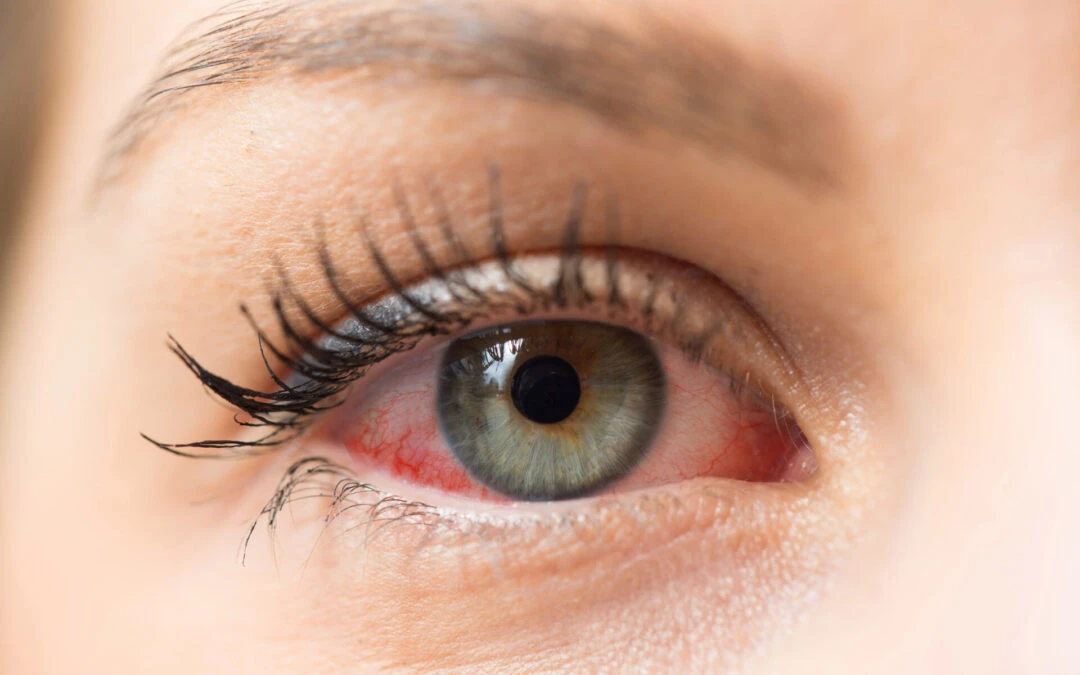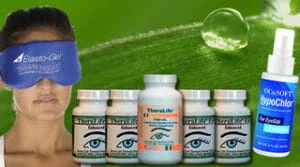TheraLife is a unique provider of oral eye treatment care, offering products that benefit customers specifically dealing with ocular conditions. For those experiencing ocular rosacea redness, TheraLife’s approach combines natural solutions with their specialized oral treatments to address underlying issues and provide relief.
TheraLife stands out as the only company offering oral eye treatment care, which is designed to enhance overall eye health from within. By focusing on internal healing, TheraLife’s products help reduce inflammation and promote eye comfort, complementing traditional treatments and natural remedies.
While exploring herbal remedies like calendula, licorice root, or green tea extract for their soothing and anti-inflammatory properties, it’s crucial to consider formulations safe for eye use and consult with an eye doctor. For comprehensive relief, integrating TheraLife’s unique oral treatments with other strategies offers a holistic approach to managing ocular rosacea naturally.
For more information and to discover how TheraLife can support your eye health, visit their website, where you’ll also find insights on
Powerful Ocular Rosacea Relief With TheraLife
Chronic dry eye is a significant feature of ocular rosacea.
Treating dry eyes will reduce inflammation and keep ocular rosacea under control
managing various eye conditions and tips for maintaining optimal eye health.
Key Takeaways
- Calendula offers gentle anti-inflammatory benefits and may reduce redness when applied as a sterile compress or cleansing solution to closed eyelids.
- Green tea extract has anti-inflammatory properties, but evidence for effectiveness on ocular rosacea redness is limited and risks of irritation exist.
- Chamomile compresses are sometimes used, but may cause allergic reactions or worsen irritation, especially in sensitive individuals.
- Licorice root may help ease redness and irritation due to its anti-inflammatory effects, but should be used only after consulting an eye care provider.
- Herbal remedies should always be used with caution near the eyes, and professional medical guidance is recommended before starting any new treatment.
Understanding Ocular Rosacea and Its Symptoms
Ocular rosacea, a chronic inflammatory condition affecting the eyes, often causes redness, irritation, and a gritty sensation. You may also notice watery eyes, light sensitivity, burning, or swollen eyelids.
Understanding ocular rosacea triggers is vital for effective symptom management. Common triggers include exposure to sunlight, stress, spicy foods, hot beverages, and extreme temperatures. Even certain skincare products or eye cosmetics can worsen symptoms. Omega 3 fatty acids, particularly from TheraLife Omega 3 Fish Oil, possess anti-inflammatory properties beneficial for ocular health.
By identifying your personal triggers, you can take proactive steps to minimize flare-ups and discomfort. Consistent eyelid hygiene, gentle cleansing, and avoiding known irritants are key practices.
Evidence suggests that integrating lifestyle modifications with medical therapies leads to improved outcomes. Working closely with your healthcare provider guarantees a tailored, patient-centered approach to managing ocular rosacea and protecting your eye health.
Chamomile: Soothing Anti-Inflammatory Properties
While chamomile is often praised for its calming effects, current research does not support its use as an effective or safe remedy for ocular rosacea. You might hear suggestions about using chamomile tea or a chamomile compress to soothe eye redness, but evidence-based medicine does not recommend these approaches for ocular rosacea. In fact, chamomile may trigger allergic reactions or worsen irritation, especially in sensitive eyes. It’s important to prioritize proven treatments and consult your eye care provider before trying herbal remedies. Blepharitis is characterized by irritation of eyelid margins, with common signs including burning, swelling, and redness.
Here’s a quick comparison:
| Remedy | Research Support | Risks/Concerns |
|---|---|---|
| Chamomile Tea | Lacks evidence | Possible allergies |
| Chamomile Compress | Not recommended | Eye irritation |
| Medical Treatments | Strong evidence | Monitor side effects |
Always seek guidance from your healthcare provider for safe care.
Green Tea Extract for Calming Eye Redness
You might consider green tea extract for its well-studied anti-inflammatory effects that can help ease eye redness. Topical cyclosporine A has also shown promise in treating ocular surface diseases, which could be beneficial for those with ocular rosacea. If you’re exploring topical options, it’s important to use safe application methods and be aware of potential side effects like irritation or allergic reactions. Always check with your eye care provider before adding new remedies to your routine.
Anti-Inflammatory Properties Explained
Although green tea extract is often marketed for its soothing potential, current scientific evidence doesn’t support its effectiveness in calming eye redness caused by ocular rosacea.
You might see claims about its anti-inflammatory properties and its role in herbal synergy for inflammation reduction, but these benefits haven’t been proven for ocular rosacea specifically.
While green tea contains catechins—compounds known to reduce inflammation in other conditions—no clinical trials confirm that this translates to relief for your eyes.
It’s important to approach herbal remedies with a critical eye and prioritize therapies backed by solid research.
A combination of oral and topical therapies has been shown to enhance treatment outcomes for ocular rosacea, highlighting the importance of evidence-based strategies.
If you’re seeking holistic care, focus on evidence-based strategies and discuss options with your eye care provider.
This guarantees you address ocular rosacea safely and effectively, without relying on unproven remedies.
Topical Application Methods
Despite the popularity of green tea extract in skincare, applying it topically to soothe eye redness from ocular rosacea isn’t supported by scientific research.
While many herbal formulations claim benefits for ocular treatments, credible evidence is lacking for their effectiveness on rosacea-related eye redness.
If you’re weighing green tea extract as part of your routine, remember that the area around your eyes is sensitive and requires special care.
Instead of relying on unproven methods, focus on holistic, patient-centered approaches that prioritize safety and proven results.
Ocular rosacea is an inflammatory condition affecting the eyes, characterized by symptoms such as redness and irritation, which requires a careful and informed approach to treatment.
Here are four key points to weigh before trying any topical application for ocular rosacea:
- Consult your eye doctor before using herbal formulations.
- Avoid self-medicating with untested ocular treatments.
- Monitor for irritation if you try new products.
- Prioritize evidence-based therapies for managing redness.
Potential Side Effects
While many people believe green tea extract offers a gentle solution for calming eye redness, it’s important to recognize that even natural remedies can cause side effects, especially when used near the sensitive eye area. You might experience mild irritation, burning, or stinging due to the eye’s natural sensitivity. Allergic reactions, such as redness or swelling, are also possible, particularly if you have a history of allergies. Prioritizing herbal safety is essential—contaminants or improper preparation can increase risks. Always use products designed for ophthalmic use and avoid homemade extracts, which may not be sterile. If you notice increased discomfort or visual changes, discontinue use immediately and consult your eye care provider. Artificial tears can provide symptomatic relief for redness and irritation associated with eye conditions like ocular rosacea. Your safety and comfort should guide every step in managing ocular rosacea holistically.
Powerful Ocular Rosacea Relief With TheraLife
Chronic dry eye is a significant feature of ocular rosacea.
Treating dry eyes will reduce inflammation and keep ocular rosacea under control
Calendula: Gentle Relief for Irritated Eyes
You might find calendula helpful for easing eye irritation, as research highlights its gentle anti-inflammatory effects. To use it safely, consider sterile, preservative-free preparations specifically designed for ophthalmic use. While most people tolerate calendula well, keep an eye out for mild allergic reactions, especially if you have sensitivities to related plants. Incorporating omega-3 fatty acids into your diet can also support ocular health by improving dry eye symptoms and reducing inflammation.
Calendula’s Soothing Properties
Calendula, a popular herbal remedy known for its anti-inflammatory and healing properties, often appears in discussions about natural relief for irritated eyes.
If you’re seeking gentle support for ocular rosacea, calendula benefits extend to calming redness and supporting overall ocular health. Research highlights calendula’s ability to reduce inflammation and promote tissue repair, making it a valuable option for soothing delicate eye tissues.
Its gentle nature means it’s well-tolerated by sensitive eyes, and many patients report improvement in comfort and appearance.
Here are four ways calendula supports your ocular health:
- Reduces eye redness and irritation by calming inflammation.
- Promotes natural healing of irritated eye tissues.
- Contains antioxidants that protect delicate eye structures.
- Offers gentle hydration, alleviating dry, tight sensation around the eyes.
Incorporating calendula into your routine can be part of a broader holistic approach to managing eye health, complementing other natural remedies and lifestyle modifications for long-term relief.
Safe Application Methods
Several safe methods exist for applying calendula to soothe ocular rosacea, but it’s important to prioritize gentle techniques and avoid direct contact with the eyes themselves. For ideal herbal safety, you should always use diluted calendula preparations and sterile materials. The table below outlines practical application techniques you can try at home:
| Application Method | Key Considerations |
|---|---|
| Cool Compresses | Soak a clean cloth in diluted calendula tea; apply gently to closed eyelids. Avoid letting any liquid enter the eye. |
| Pre-moistened Pads | Use sterile, pre-moistened calendula pads; place gently on closed eyes for several minutes. |
| Gentle Cleansing | Use calendula-infused water with a sterile cotton pad to clean the eyelid margins, never touching the eye surface. |
Incorporating relaxation techniques such as yoga and meditation can help manage stress levels, which may alleviate symptoms. Always consult your healthcare provider before starting any new herbal regimen to confirm these application techniques fit your unique needs.
Potential Side Effects
Although many people tolerate calendula well, mild side effects can still occur, especially if you have sensitive skin or plant allergies.
When using calendula for ocular rosacea, it’s important to be aware of potential interactions and herbal contraindications. Even though calendula is generally gentle, monitoring your body’s response helps guarantee you aren’t developing unexpected sensitivities.
Here are some potential side effects and considerations:
- Allergic reactions: You may notice redness, itching, or swelling, especially if you’re allergic to plants in the Asteraceae family.
- Skin irritation: Applying calendula topically may cause a mild burning or stinging sensation.
- Potential interactions: Calendula could interact with certain medications, especially those affecting the immune system.
- Herbal contraindications: Avoid calendula if you’re pregnant, breastfeeding, or have known allergies to related plants.
To manage ocular rosacea effectively, consider incorporating warm compress therapy into your routine, which can help reduce inflammation and improve symptoms.
Turmeric and Curcumin’s Anti-Redness Effects
While turmeric and its active compound curcumin are widely recognized for their general anti-inflammatory properties, current research doesn’t support their effectiveness in reducing redness specifically associated with ocular rosacea.
You might hear about turmeric benefits for skin and overall inflammation, but when it comes to ocular rosacea redness, the evidence simply isn’t there yet. Studies investigating curcumin dosage for systemic inflammation haven’t demonstrated a direct impact on the unique vascular changes and redness seen in ocular rosacea.
If you’re considering herbal remedies, it’s important to use a patient-centered, evidence-based approach—always discuss options with your eye care provider.
While turmeric has promising benefits in other inflammatory conditions, it shouldn’t replace proven treatments or clinical guidance for ocular rosacea management.
Bilberry Extract for Vascular Support
Despite bilberry extract’s reputation for supporting blood vessel health, current scientific evidence doesn’t support its use for managing the vascular changes seen in ocular rosacea.
You may have heard about bilberry benefits, especially for vascular health and eye wellness. However, available studies don’t show that bilberry extract can address the specific redness or blood vessel issues associated with ocular rosacea.
If you’re contemplating herbal remedies, it’s important to rely on what’s been proven effective and safe.
Here are four important points to reflect on:
- Clinical trials haven’t confirmed bilberry’s effect on ocular rosacea redness.
- Bilberry benefits for vascular health relate mainly to circulation, not rosacea mechanisms.
- Herbal supplements can interact with medications—always consult your healthcare provider.
- Focus on holistic care, including medical management and lifestyle changes.
Eyebright Herb and Ocular Comfort
Many people exploring herbal options for eye health also come across eyebright, a plant traditionally used for soothing eye discomfort.
If you’re seeking natural ways to improve ocular comfort, eyebright may catch your attention because of its long history in herbal medicine. Some proponents suggest eyebright benefits include relieving irritation, reducing redness, and supporting overall eye wellness.
However, while anecdotal evidence abounds, clinical studies on eyebright’s effectiveness for ocular rosacea are limited. It’s important to weigh traditional use against scientific data, especially for sensitive conditions like ocular rosacea.
Always consult your eye care professional before trying eyebright, particularly if you use prescription eye drops or have allergies.
Prioritizing safety and evidence-based approaches guarantees you make informed decisions for your ocular comfort and health.
Licorice Root: Targeting Inflammation Naturally
Because ocular rosacea often involves persistent inflammation, you might look for natural ways to calm irritated eyes. Licorice root stands out for its well-studied anti-inflammatory mechanisms, making it a promising herbal remedy.
Research shows that compounds like glycyrrhizin in licorice root help inhibit pathways that trigger inflammation. This can support your eye comfort and help reduce redness associated with ocular rosacea.
Here are key ways licorice benefits those looking to manage inflammation naturally:
- Inhibits pro-inflammatory cytokines, easing irritation.
- Reduces oxidative stress, which can worsen rosacea symptoms.
- Supports your body’s natural healing response.
- Offers gentle, holistic relief without harsh chemicals.
Tips for Safe Use of Herbal Remedies for Eye Health
While herbal remedies like licorice root offer promising support for ocular rosacea, it’s important to approach these options with care to protect your eye health.
Always consult your eye care professional before starting any herbal supplement—especially if you’re already using prescription medications—to prevent unexpected herbal interactions.
Some herbs can affect how medications work or may not be safe for direct use around the eyes. Don’t apply herbal products directly to your eyes without medical supervision, as this can compromise eye safety or worsen redness and irritation.
Opt for high-quality, standardized supplements from reputable sources.
Monitor your symptoms closely and report any changes to your healthcare provider.
Powerful Ocular Rosacea Relief With TheraLife
Chronic dry eye is a significant feature of ocular rosacea.
Treating dry eyes will reduce inflammation and keep ocular rosacea under control
Frequently Asked Questions
Can Diet Changes Improve Ocular Rosacea Symptoms?
You can improve ocular rosacea symptoms by making dietary adjustments and focusing on anti-inflammatory foods.
Evidence suggests that reducing triggers like spicy foods, caffeine, and alcohol, while increasing intake of leafy greens, omega-3-rich fish, and berries, may help control flare-ups.
It’s a holistic approach, so listen to your body and track what works for you.
Always consult your healthcare provider to personalize your plan and guarantee it’s safe and effective.
Are There Any Lifestyle Triggers That Worsen Ocular Rosacea?
Yes, you’ll find certain lifestyle triggers can worsen ocular rosacea. Stress management is vital, as stress often leads to flare-ups.
Environmental factors like wind, sun exposure, and extreme temperatures can also irritate your eyes. Evidence suggests that minimizing these triggers and practicing good eyelid hygiene can help.
Taking a holistic approach by identifying personal triggers and working with your healthcare provider empowers you to keep symptoms under control and protect your eye health.
How Does Ocular Rosacea Differ From Regular Rosacea?
Ocular rosacea differs from regular rosacea because it mainly affects your eyes rather than your skin.
You’ll notice ocular rosacea symptoms like red, irritated eyes, burning, or even blurry vision.
The causes overlap with regular rosacea—think inflammation and immune response—but ocular rosacea targets the eyelids and tear glands.
Managing it holistically means addressing triggers, practicing good eyelid hygiene, and seeking medical advice, since untreated ocular rosacea can lead to serious eye complications.
Is Ocular Rosacea Contagious to Others?
While you might worry about ocular rosacea transmission, it’s important to know the truth stands in contrast to common ocular rosacea myths: this condition isn’t contagious.
You can’t catch it from touching, sharing towels, or being near someone with ocular rosacea. Evidence shows it’s linked to inflammation, not infection.
Focusing on gentle eye care and discussing concerns with your provider supports both your comfort and overall eye health, without fear of passing it on.
Can Contact Lenses Be Worn With Ocular Rosacea?
You can wear contact lenses with ocular rosacea, but you’ll need to be extra cautious.
Choose contact lens options made for sensitive eyes, like daily disposables, to reduce irritation.
Prioritize eye care tips such as keeping your lenses clean, using preservative-free artificial tears, and avoiding makeup that could worsen redness.
Always consult your eye care provider, as they’ll personalize your plan and help you balance comfort with managing ocular rosacea symptoms.
Powerful Ocular Rosacea Relief With TheraLife
Chronic dry eye is a significant feature of ocular rosacea.
Treating dry eyes will reduce inflammation and keep ocular rosacea under control
Conclusion
For those experiencing the challenging flare of ocular rosacea, TheraLife offers a unique approach with its oral eye treatment care, which is unmatched by others in the market. Their products aim to provide relief by addressing the root causes of eye conditions from within, promoting overall eye health and comfort. While herbal remedies like chamomile, green tea, and calendula are known for their soothing properties, TheraLife’s innovative approach brings the added benefit of comprehensive, internal support for eye conditions. Before starting any new treatment, it’s crucial to consult with your eye care provider to ensure a balanced approach that combines natural wisdom with evidence-based solutions for lasting comfort.





